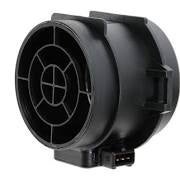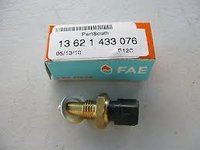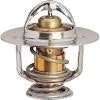bmw 320d
Asked by irishlassy Jan 20, 2014 at 01:58 PM about the 2002 BMW 3 Series 320d
Question type: Maintenance & Repair
hi i have a bwm 3 series ..havent long bought it ...its started to lose power then when i
reacted my location was off a cylinder black smoke from exhausted leaving black make
on the ground ...when u rave it when gos up to 200 rave it gos on a cylinder again ,
please if u have any advice much appreciated
6 Answers
migration_judge_roy answered 10 years ago
okay lookin' like a MAF sensor as this level of technology...this being the case....would disassemble and clean this grid with some brake cleaner don't touch it (is fragile) just clean it~ it measures density of the air stream and the amount of various gasses~.....hey this one's only sixty bucks~https://www.google.com/#q=2002+BMW+3+320d+MAF+sensor&tb m=shop
migration_judge_roy answered 10 years ago
engine temperature is considered too....if it's saying "I'm COLD...I'm COLD" the computer's got no choice but to make it rich...OK? ~https://www.google.com/#q=2002+bmw+3+series+engine+temperature+se nsor&tbm=shop&spd=16484639754845476121
migration_judge_roy answered 10 years ago
you may in fact BE COLD...because the thermostat is stuck in the OPEN position~
migration_judge_roy answered 10 years ago
Really was looking for an Intake Air Temperature Sensor....but these don't have them instead measures the Density of the air thru this grid with rare- earth expensive materials to do the job....this level of technology has been used since the early 1970's Nowadays this measures intake air density with like a filament that expands in a little cage about the size of a rollerball pen~...see that's what I get by assuming that BMW is all that~
migration_judge_roy answered 10 years ago
The air mass information is necessary for the engine control unit (ECU) to balance and deliver the correct fuel mass to the engine. Air changes its density as it expands and contracts with temperature and pressure. In automotive applications, air density varies with the ambient temperature, altitude and the use of forced induction, which means that mass flow sensors are more appropriate than volumetric flow sensors for determining the quantity of intake air in each piston stroke. (See stoichiometry and ideal gas law.) There are two common types of mass airflow sensors in use on automotive engines. These are the vane meter and the hot wire. Neither design employs technology that measures air mass directly. However, with additional sensors and inputs, an engine's electronic control unit can determine the mass flowrate of intake air. Both approaches are used almost exclusively on electronic fuel injection (EFI) engines. Both sensor designs output a 0.0–5.0 volt or a pulse-width modulation (PWM) signal that is proportional to the air mass flow rate, and both sensors have an intake air temperature (IAT) sensor incorporated into their housings. When a MAF is used in conjunction with an oxygen sensor, the engine's air/fuel ratio can be controlled very accurately. The MAF sensor provides the open-loop controller predicted air flow information (the measured air flow) to the ECU, and the oxygen sensor provides closed-loop feedback in order to make minor corrections to the predicted air mass. Also see MAP sensor.
migration_judge_roy answered 10 years ago
apparently you get the gravy when you're ordering the ruben~



